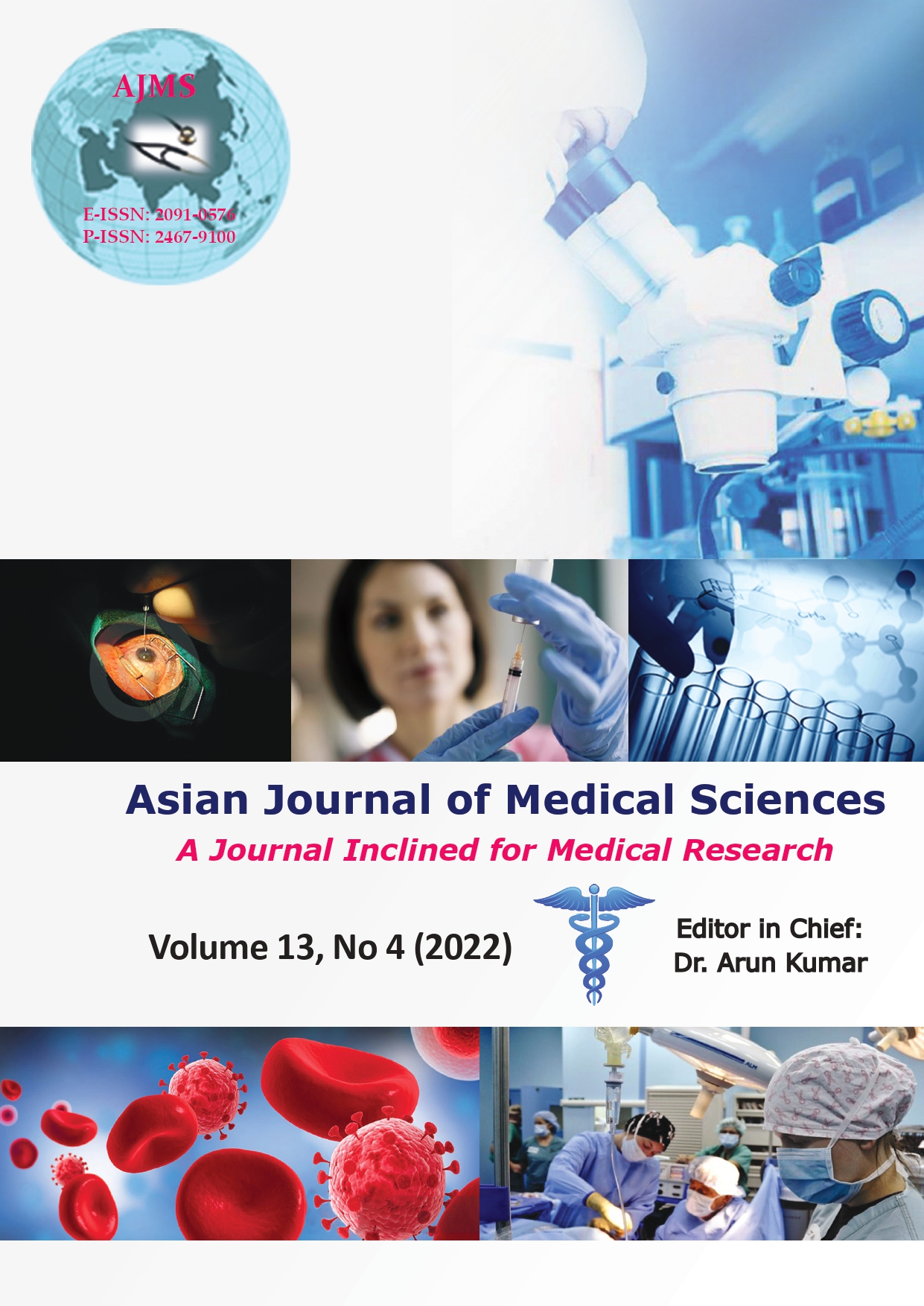An observational study of haemophilia patients attending a tertiary care centre in West Bengal
Keywords:
Bleeding disorder, Haemophilia, HemarthrosisAbstract
Background: Haemophilia is the most common inherited coagulation disorders transmitted by X-linked recessive fashion affecting the males and females are the carriers of the disease. Haemophilia is distributed worldwide and has heterogeneous presentation depending on its severity starting from neonatal period. Knowledge of spectrum of the presentation of haemophilia helps in early diagnosis and planning of management.
Aims and Objectives: This study aims to evaluate the socio-demographic profile of the patients, clinical presentations, epidemiological profiles, and the outcomes of the hemophilic patients in a tertiary care teaching hospital in West Bengal.
Materials and Methods: This study was a prospective, observational, single center study conducted in the Pediatrics haemophilia treatment center at Midnapore Medical College, Paschim Medinipore from May 2020 to April 2021. Detailed history was taken and recorded in a predesigned pro forma Case Record Form. Analyses were done only after completion of CRF of the last patient. Statistical analyses were performed using SPSS version 20.0 software. Continuous variables were compared by Paired t-test. Dichotomous events were analyzed using the Fisher’s exact test and Chi-squared Test. Statistical significance was defined as P<0.05.
Results: Mean age of children was 93.64 months (SD 6.38). All children of haemophilia were male. This study noted that majority of patients of haemophilia were staying at rural area (67.19%) and rest at urban area (32.81%). BMI of majority children was within normal limit (51.56%), followed by underweight children (32.81%), overweight children (12.50%), and obese child (3.13%). Factor assay showed that 51 children (79.69%) had severe factor deficiency and 13 children (20.31%) had moderate factor deficiency. Positive family history was seen in 41 children (64.06%), and rest 23 children (35.94%) had no family history of haemophilia or any other bleeding disorder. Majority of patients (26 patients) came with their first bleed during infancy (40.63%), 21 children presented between the age of >12 months to ≤24 months (32.81%). Bruises were the most common presentation (37.50%), followed by joint bleeding (31.25%), muscle bleed (10.94%), and gum bleeding (7.81%).
Conclusion: Facility of counseling for children of hemophilia is required at regular interval (trimester wise/semester wise) with the aim to enhance the knowledge of personal care, treatment, and to boost up themselves for their academics, activities, etc.
Downloads
Downloads
Published
How to Cite
Issue
Section
License
Copyright (c) 2022 Asian Journal of Medical Sciences

This work is licensed under a Creative Commons Attribution-NonCommercial 4.0 International License.
Authors who publish with this journal agree to the following terms:
- The journal holds copyright and publishes the work under a Creative Commons CC-BY-NC license that permits use, distribution and reprduction in any medium, provided the original work is properly cited and is not used for commercial purposes. The journal should be recognised as the original publisher of this work.
- Authors are able to enter into separate, additional contractual arrangements for the non-exclusive distribution of the journal's published version of the work (e.g., post it to an institutional repository or publish it in a book), with an acknowledgement of its initial publication in this journal.
- Authors are permitted and encouraged to post their work online (e.g., in institutional repositories or on their website) prior to and during the submission process, as it can lead to productive exchanges, as well as earlier and greater citation of published work (See The Effect of Open Access).




